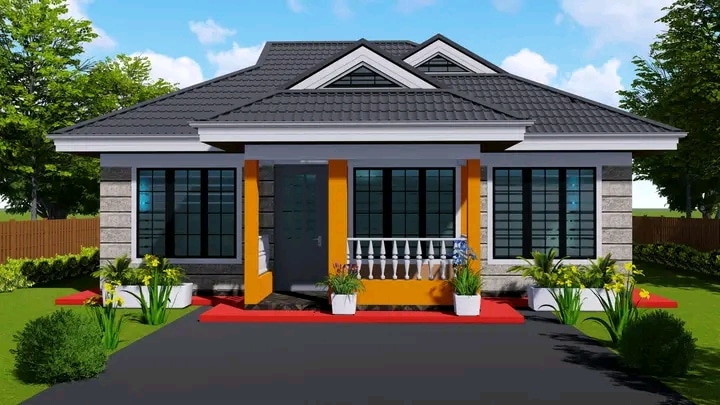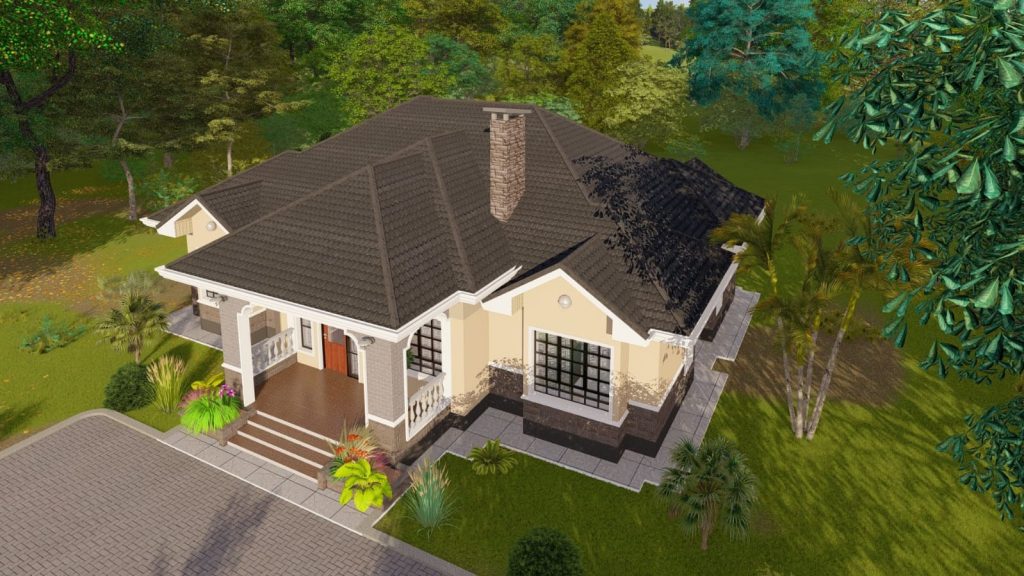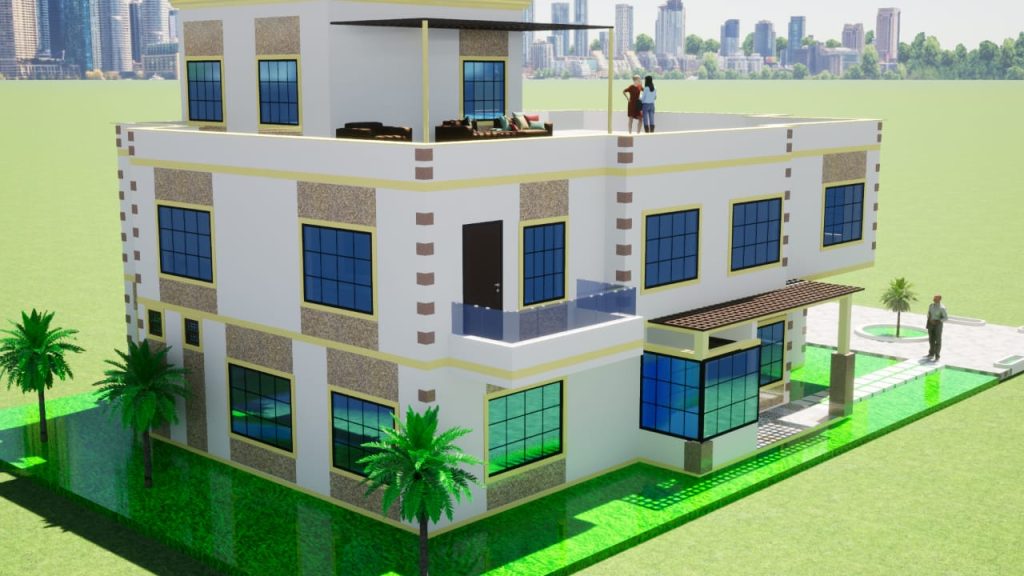Discover practical and affordable cheap house designs in rural Kenya — explore low-cost plans, real budgets, trusted suppliers, and downloadable resources to help you build your dream home affordably. Learn how to cut costs using local materials, phased building, and vetted builders across Kenya.
Why choose cheap house designs in rural Kenya
Affordable house designs in rural Kenya help you save money without compromising comfort or durability. Most rural homeowners want functional spaces that fit within modest budgets while maximising available land. Cheap designs are ideal because they use locally sourced materials, simple foundations, and straightforward floor plans that reduce labour costs. They also allow flexibility, letting you expand later as your income grows.
Cost vs value: when “cheap” is smart
Cheap doesn’t mean low quality. When properly planned, low-cost housing in Kenya can offer great long-term value through durability, energy efficiency, and low maintenance. Designs that prioritise cross ventilation, sunlight, and strong roofing minimise future expenses. The goal is to invest once in a solid structure that lasts for decades without costly repairs.
Typical rural constraints (access/transport, water, soil)
Rural construction faces unique challenges such as limited road access, unreliable water sources, and varying soil conditions. These factors affect foundation design and the overall project budget. Choosing a design that matches your site’s conditions helps avoid unexpected costs. Consider site surveys or local expert advice before building.

Most cost-effective rural house types (overview)
Choosing the right type of rural house determines how much you’ll spend and how quickly you can finish construction. The best options in Kenya combine local materials, simple structures, and low maintenance needs. Let’s look at the top affordable rural homes in Kenya that balance cost, quality, and comfort.
Mabati / corrugated iron kits (pros, cons, kit suppliers)
Mabati houses are among the cheapest to construct in Kenya. They are lightweight, quick to assemble, and suitable for both temporary and permanent housing. However, without insulation, they can get hot during the day and cold at night. To improve comfort, add ceiling boards or reflective insulation under the roof. Many suppliers in Kenya offer Mabati house kits with prefabricated frames and customizable layouts.
Interlocking stabilised soil block houses (speed + savings)
Interlocking block houses reduce construction costs by up to 30%. The blocks use local soil mixed with cement, eliminating the need for expensive fired bricks. Their interlocking design reduces mortar use and speeds up construction. They are durable, eco-friendly, and perfect for low-cost housing in Kenya’s rural areas.
Small single-storey bungalows & rondavels — best use cases
Small bungalows and rondavel-style homes are efficient in design and construction. They use fewer materials, require less land preparation, and are easy to maintain. Their simple floor plans make them ideal for retirees, first-time homeowners, or small families. These designs also blend naturally with Kenya’s rural landscapes.

Ready-to-buy house plans and where to get them (transactional)
Having access to ready-to-buy plans simplifies the building process and saves time. Today, you can purchase affordable rural house plans in Kenya online from trusted local designers and plan marketplaces. These plans come complete with drawings, structural details, and cost estimates, helping you begin construction quickly.
Local plan stores (Maramani + others) — how to pick the right plan quickly
Websites like Maramani, AfroHousePlans, and Building in Kenya offer downloadable blueprints at various price points. When choosing a plan, look for layout simplicity, material flexibility, and estimated building costs. Always confirm that the plan matches your region’s soil type and weather patterns. Many sellers also allow small modifications to suit your site.
Digital download vs custom design — pricing and delivery expectations
A digital plan is faster and cheaper to obtain, while a custom design offers personalisation for your plot. Most downloadable plans cost between KES 3,000–10,000, compared to KES 25,000+ for custom designs. Delivery is almost instant after payment, but always verify if the seller provides technical support during construction.
Detailed cost estimates & sample budgets for rural builds
Understanding costs upfront helps you plan better and avoid financial strain. A cheap rural house in Kenya can cost between KES 500,000 and 1.8 million, depending on materials and size. Below are practical examples to guide your budgeting.
3 sample budgets (KES ranges) for 1-bed, 2-bed, 3-bed using mabati, blocks, prefab
- 1-Bed Mabati house: KES 450,000 – 650,000
- 2-Bed interlocking block house: KES 800,000 – 1,100,000
- 3-Bed prefab bungalow: KES 1.2M – 1.8M
These prices include labour, transport, and finishes. Using local materials and direct labour can cut costs further.

Hidden costs (transport, soil tests, access roads, permits)
Always budget for hidden costs like transport, especially if materials must be delivered to remote locations. A soil test and site survey ensure your foundation is suitable and safe. Don’t forget permit fees, temporary housing for workers, and site security. Planning for these avoids unpleasant surprises
Related post: Construction Costs in Kenya (2024/2025): Everything You Need to Know Before Building
Practical plans: 3 low-cost starter designs (floorplan highlights + materials list)
Affordable designs can still look beautiful and functional. Here are three sample layouts that fit most rural family needs. Each can be built in stages depending on your budget.
Compact 1-bed starter (plan thumbnail + downloadable PDF)
This design is ideal for singles or couples starting out. It features a living area, kitchen, and bedroom within 40–50 sqm. Using interlocking blocks or mabati keeps costs low while maintaining durability. It’s easy to expand later by adding another bedroom or veranda.
2-bed economical bungalow (phased build options)
A 2-bedroom bungalow offers a balance between comfort and affordability. With a compact layout and shared wet areas (bathroom and kitchen), you can build in two phases — structure first, then finishes. Using locally made doors, windows, and tiles reduces expenses without compromising quality.
3-bed expandable plan (futureproofing for rental income)
This design suits growing families or those planning to rent out part of their home. It includes three bedrooms, a sitting room, and a veranda. Foundations can be laid for future extensions or detached servant quarters.
Materials & methods that cut costs (deep practical guide)
Material selection directly affects your construction budget. The most successful low-cost housing in Kenya uses local, durable, and readily available materials.
Interlocking blocks, stabilised soil, local stone, reclaimed timber — how to choose
Interlocking blocks are affordable and sustainable. Stabilised soil blocks reduce cement use and maintain thermal comfort. Local stone is long-lasting and visually appealing, while reclaimed timber works well for roofing or frames. Choose materials based on availability and your climate zone.

Prefab / precast panel options and suppliers (lead times + sample quotes)
Prefabricated panels reduce construction time drastically. Kenyan suppliers now offer kits for rural areas that can be assembled within weeks. Prices start from KES 1.2M for small homes. Prefabs also minimise waste, ensuring long-term savings.
Labour, contractors & vetting: get reliable builders in rural Kenya
Finding the right builder ensures your project runs smoothly and stays on budget. Avoid unlicensed or inexperienced contractors who might cut corners.
What to include in a quote (bill of quantities template)
Always ask for a detailed bill of quantities showing labour, materials, and timelines. A clear quote helps you compare builders fairly. Make sure to request progress-based payment schedules and warranty details before signing any contract.
Vetting checklist: references, site visits, staged payments
Visit at least two of the contractor’s previous sites to assess their workmanship. Speak with past clients about reliability and deadlines. Use staged payments tied to completed milestones, not calendar dates.
Site selection, foundations & simple geotech for rural plots
Your building site determines how much you’ll spend on foundations and drainage. Rural sites often need soil reinforcement or access roads, which can raise costs if not planned early.
Quick DIY site checks vs when to hire a soil test
Before construction, check that the land drains well and is not prone to flooding. For black cotton soil or rocky terrain, hire a professional to test stability. Spending KES 10,000–20,000 on a soil test could save you thousands in foundation repairs later.

Phased building: spread cost with practical roadmaps
Phased construction allows you to build in stages based on your cash flow. It’s a popular method for rural homeowners working with limited budgets.
Phase 1 (core living), Phase 2 (kitchen & sanitation), Phase 3 (finishes & expansion)
Start with essential rooms like bedrooms and a living area in Phase 1. Add the kitchen and bathroom later once funds increase. Finishes, roofing upgrades, and external spaces can follow in Phase 3. This method lets you occupy the home earlier while completing it gradually.
Financing options & community models for rural builds
Many Kenyans use creative financing models to afford construction. These include SACCOs, government programs, and group savings.
Microloans, SACCOs/Chamas, government/NGO programmes
Microfinance institutions and SACCOs offer flexible loans tailored for rural home projects. Some NGOs support low-cost housing initiatives through grants or subsidies. Always review repayment terms and total interest before borrowing.
Community build/co-op model: pros, agreements and simple MOUs
Community or chama-based builds help members pool resources and labour. This model reduces costs and strengthens accountability. Ensure a written agreement (MOU) defines each member’s role, contribution, and timelines.
Internal links: [Affordable housing Kenya programs] [SACCO loans for housing Kenya]
Case studies & supplier directory (trust signals to convert)
Learning from real-life examples helps you plan smarter. Many Kenyans have built durable, low-cost rural homes with limited budgets.
3 short case studies: cost, duration, lessons (real numbers)
Example 1: A Kajiado 2-bed mabati home cost KES 780,000 and took 6 weeks.
Example 2: A Kisii interlocking block house cost KES 1M over 3 months.
Example 3: A prefab home in Nakuru cost KES 1.5M and was completed in 5 weeks.
Each project saved 20–30% through local sourcing and direct supervision.
Local supplier & builder directory (mabati kit sellers, block makers, prefab vendors)
Create a shortlist of suppliers within your county to minimize transport costs. Always request delivery timelines and warranty information. Compare at least three quotations before purchasing materials.
Conclusion
Cheap house designs in rural Kenya offer a smart path to homeownership without debt. With the right plan, reliable builder, and phased approach, you can build a lasting, comfortable home. Take advantage of local materials, trusted suppliers, and simple floor plans to stay within budget. Start today by downloading a house plan or requesting a quote.